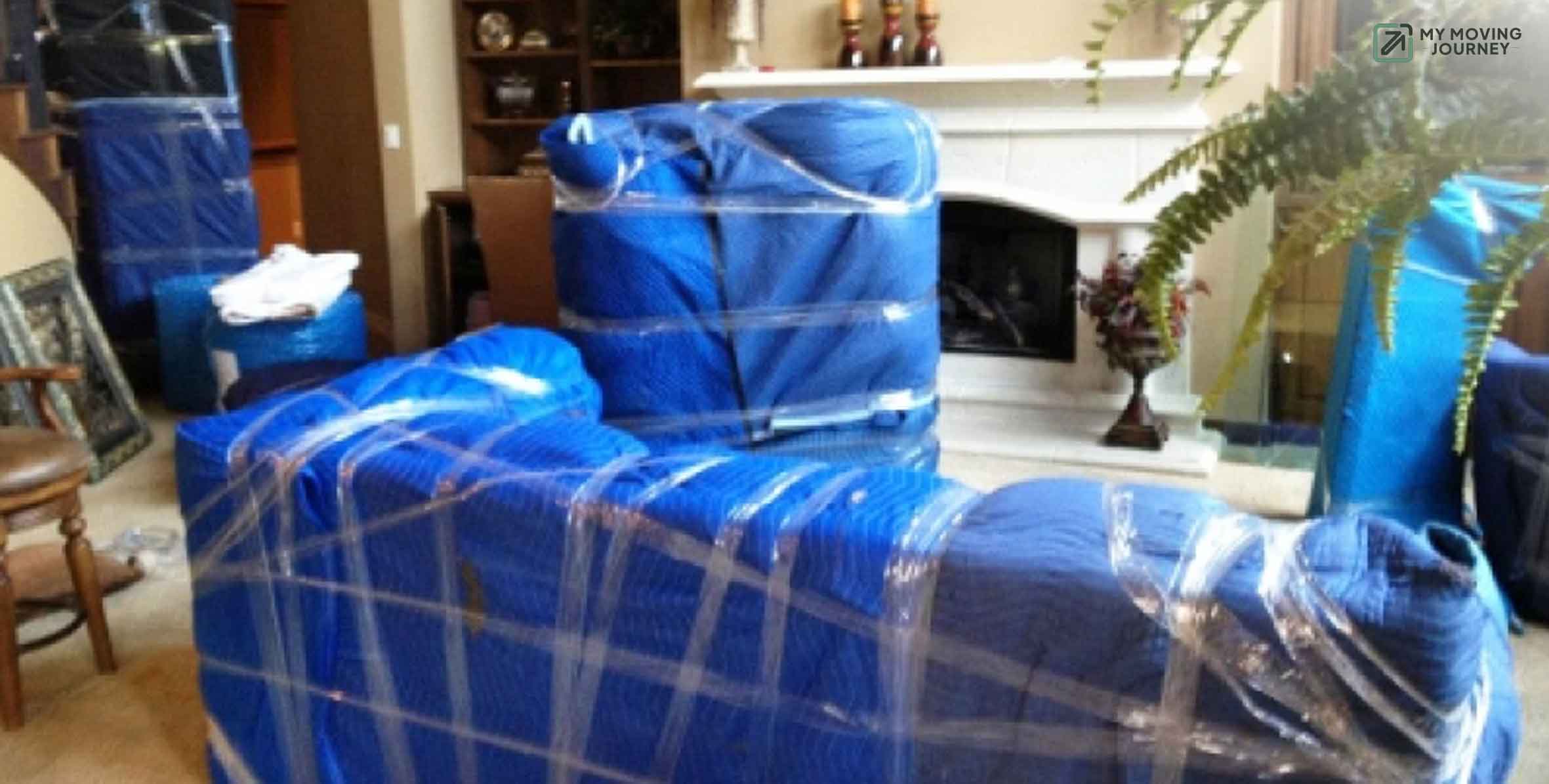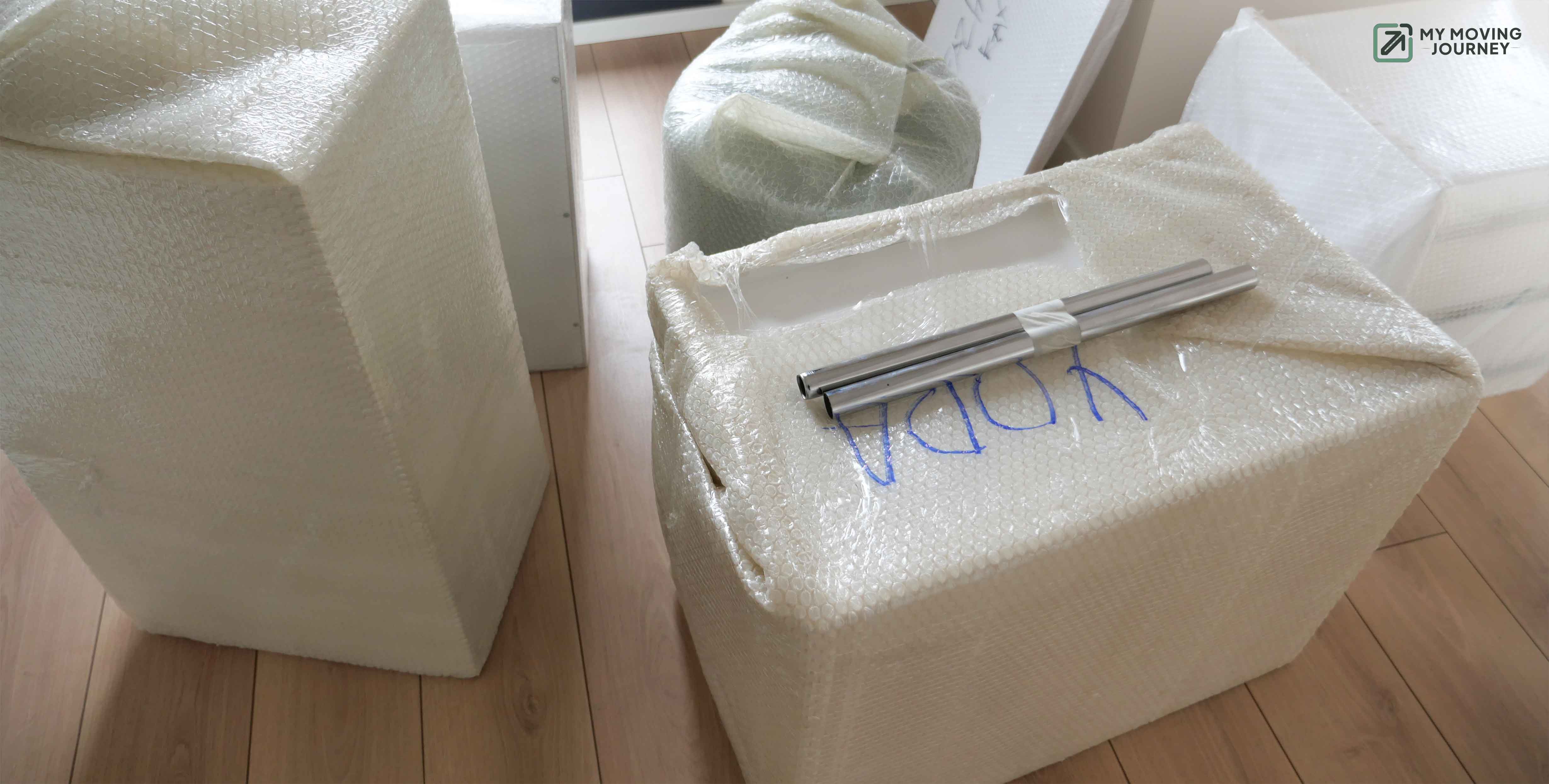An ounce of prevention is worth a pound of cure.
If you’ve ever experienced a move, you know how stressful it can be—not just the logistics but the concern about damage to your cherished items. Did you know that approximately 30% of Americans move at least once every five years? In 2023 alone, over 27 million people relocated to the United States.
With so many people on the move, protecting belongings becomes a top priority, and that's where moving blankets come in.
Imagine this: you're transporting a beautiful wooden dresser that's been in your family for generations. You hit a bump, and that dresser could easily get scratched or damaged without proper padding.
That's why using moving blankets isn't just an option; it's a necessity. According to a survey, over 65% of movers who used moving blankets reported fewer damages and a smoother moving experience compared to those who didn’t. That’s a significant statistic that showcases how essential these items are during a move.
In today’s blog, we are going to learn everything there is to know about moving blankets—what they are, the different types, and how to use them effectively.
What are Moving Blankets?
Moving blankets (also known as furniture pads) are thick, durable coverings designed to protect your items during transport. They act as a cushioned barrier that prevents scratches, dings, and other forms of damage when shifting heavy or fragile items.
These blankets come in various materials and styles, but the most common types are woven, non-woven, and skin blankets:
- Woven Moving Blankets: These are premium options made from thick cotton or a cotton/polyester blend. They provide excellent protection but can be heavy and difficult to use. Woven blankets are also machine washable, making them ideal for repeated use.
- Non-woven Moving Blankets: These are less durable but lighter and easier to handle. They are made by stitching multiple layers of padding together and provide decent protection for most household items.
- Skin Moving Blankets: The thinnest and least protective type, usually made from recycled materials. They are cost-effective and work well for wrapping items that don’t require heavy padding.
How to Use Moving Blankets
Knowing how to use moving blankets properly can be the difference between a smooth move and a stressful one. Here’s a step-by-step guide to effectively use these protective covers:
- Wrap Large Furniture and Appliances: Moving blankets are ideal for wrapping large pieces of furniture like sofas, dressers, and refrigerators. To do this, drape the blanket over the item and secure it with packing tape or stretch wrap. Make sure to cover every part of the item to avoid any scratches or dings during the move.
- Protect Fragile Items: Use moving blankets to wrap delicate items such as mirrors, glass tables, or artwork. These items can be prone to cracking or breaking, so adding a layer or two of blankets around them will provide extra cushioning and minimize vibrations.
- Secure with Stretch Wrap: Once the blanket is in place, use a stretch wrap to keep it tight and secure. This step prevents the blanket from slipping off during the move and offers additional protection from moisture and dirt.
- Use Moving Blankets for Floor Protection: Moving blankets aren’t just for items—you can also use them to protect floors and doorways. Placing blankets on high-traffic areas will prevent dirt and scuff marks from shoes and equipment.
Different Uses for Moving Blankets
Aside from the obvious use in moving, these blankets can be repurposed in several other ways:
- Temporary Floor Coverings: Lay them down during home renovations or painting projects to catch spills and prevent damage.
- Soundproofing: They can serve as makeshift soundproof barriers due to their thick and cushioned nature.
- Pet Bedding: If you have pets, you can use old moving blankets as comfortable bedding.
Moving Blanket Sizes and Thickness
Moving blanket sizes and thickness vary based on the type of items you're protecting. Most standard blankets are 72 x 80 inches in size, which is suitable for covering large furniture. However, you can find smaller options for individual pieces, like chairs or small tables.
When it comes to thickness, the rule of thumb is the thicker, the better. Thicker blankets provide more padding, which is essential for fragile or high-value items. The weight of a blanket is often measured in pounds per dozen (e.g., 65 lbs/dozen), which gives an idea of how heavy and protective it will be.
Moving Blanket Alternatives
If you are in a pinch and don’t have access to moving blankets, there are several moving blanket alternatives you can consider:
- Towels and Bedding: Large bath towels and blankets can work as substitutes, though they may not offer as much protection as dedicated moving pads.
- Bubble Wrap: This is ideal for smaller, fragile items like glassware or electronics.
- Cardboard: Use flattened cardboard boxes as a protective layer between stacked items.
How Much Does a Moving Blanket Cost?
When it comes to moving blankets, the cost can vary quite a bit depending on the quality, size, and brand. Just like when you’re buying any other product, you get what you pay for.
Let's break down the costs and see which type of blanket fits your needs.
| Type | Material | Cost per Blanket | Cost per Dozen | Best For |
|---|---|---|---|---|
| Skin Moving Blankets | Recycled material, thin fabric | $5 - $10 | $60 - $100 | Budget-conscious movers, light use |
| Non-Woven Moving Blankets | Polyester with padding | $7 - $15 | $80 - $150 | Moderate use, furniture protection |
| Woven Moving Blankets | Cotton or cotton/poly blend | $15 - $25 | $150 - $300 | Heavy-duty moves, repeated use |
| Premium Moving Blankets | Quilted with reinforced edges | $25 - $40 | $300 - $500 | Professional movers, high-value items |
Additional Costs to Consider
Beyond the base price of the blankets, consider these additional costs:
- Shipping Costs: If you are buying online, shipping fees can add up, especially for bulk orders. Look for retailers offering free shipping on larger orders.
- Protective Accessories: You might need a stretch wrap or packing tape to secure the blankets, adding another $10-$20 to your budget.
- Storage Costs: If you purchase the blankets but don’t have a place to store them, you might incur additional costs for a storage unit or space in your garage.
- Cleaning and Maintenance: While woven blankets can be machine-washed, non-woven or skin blankets may need to be replaced after a few uses, making them a recurring cost item if you move frequently.
Factors Affecting the Cost of Moving Blankets
- Material and Construction: The most significant factor influencing the cost is the material. Woven blankets made of cotton or cotton/polyester blends are generally more expensive than non-woven or “skin” blankets. A good quality woven blanket can cost anywhere from $15 to $25 per blanket, while thinner skin blankets are priced around $5 to $10 each.
- Size and Thickness: The larger and thicker the blanket, the higher the cost. Standard sizes like 72” x 80” are the most common, but you’ll also find smaller and larger options. Heavier blankets are priced by weight, often measured in pounds per dozen blankets (e.g., 65 lbs/dozen).
- Quantity: Buying moving blankets in bulk can significantly reduce the cost per blanket. For instance, a single high-quality blanket might cost $20, but purchasing a dozen of them might bring the price down to $150-$200.
- Brand and Retailer: Brands offer various price points. Online marketplaces often have more competitive prices and bundle options.
- Usage Frequency: If you’re only moving once, renting blankets might be a more cost-effective option. Many moving truck rental companies like U-Haul and Penske offer blanket rentals for around $10 to $15 per dozen per day.




